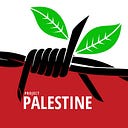Fifteen-year-old Palestinian shot dead by Israeli troops in West Bank
Mohammad Hamayel, 15, succumbed to his critical injury after being hit in the head with a round of live ammunition shot by Israeli forces
NABLUS, March 11, 2020 (WAFA) — A Palestinian teen was Wednesday killed by Israeli gunfire during the confrontations that broke out at Mount Al-’Arma, south of the West Bank city of Nablus, announced the Health Ministry.
The Ministry announced that Mohammad Hamayel, 15, succumbed to his critical injury at the Rafida Government Hospital after being hit in the head with a round of live ammunition shot by Israeli forces at Mount Al-’Arma, also known in Arabic as Jabal al-’Arma.
Earlier today, Scores of Israeli military vehicles stormed the site, on the outskirts of Beita town, and assaulted Palestinians who gathered atop the mountain to fend off an Israeli settlers’ attempt to seize it.
Spokesman for the Health Ministry Tarif Ashour confirmed that medics at the Rafidia Government Hospital treated 17 casualties, including head of the Anti-Wall and Settlement Committee Walid Assaf.
Ashour added that a seriously-injured casualty was admitted to the Operations Room and another to the Intensive Care Unit, while he described the other 14 casualties as stable.
Israeli settlers overnight renewed their attempt to reach the top of the mountain, but hundreds of the residents of Beita, which lies south of Nablus, repelled their attempt.
Residents of Beita have continued their daily sit-ins atop the mountain since Friday February 28, when settlers made the first attempt to seize the mountain and turn it into an Israeli religious tourist route.
The confrontation left 93 people injured by Israeli live fire and rubber bullets.
Palestinians say settlers had been emboldened by US President Donald Trump’s Middle East plan and Israeli Prime Minister Benjamin Netanyahu promise to annex settlements.
Jabal al-’Arma, which spreads over 250 dunums, is one of the most archeological sites in Nablus, and the highest peak in Beita.
According to historians, it has been inhabited since the early Bronze Age, about 3,200 years ago.
Atop the mountain lie walls which indicate that an ancient castle was built there, under which seven water tanks were hewn into the rock.
However, such features make the mountain a prime target for Israeli settlers as colonial settlements are often positioned above water reserves, effectively stealing water as well as land.
